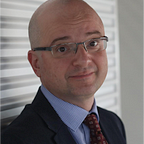Inside the Cell (Part 1/3)
A brief history of understanding our tiny building blocks.
A German physician Otto Heinrich Warburg was born in Freiburg, close to the Swiss border, in 1883. He was a very daring man. He served as an officer in the elite Prussian cavalry regiment during the First World War and received the Iron Cross, 1st Class, for his bravery. Few would think, at the time, that he would be nominated for the Nobel prize as many as 47 times over the course of his career.
He was a son of the physicist Emil Warburg, who had converted to Protestantism as an adult, although his own parents were Orthodox Jews. His mother, Elizabeth Gaertner, was the daughter of a Protestant family of bankers and civil servants from Baden. His mother’s background may have been quite fortunate for Otto, as his personal future would later reveal.
The young Otto Warburg had first earned his doctorate in chemistry in Berlin in 1906 and then became a medical doctor in Heidelberg in 1911. As a young doctor, he joined Prussian cavalry and revealed his war heroics. But toward the end of the war, when the outcome was becoming apparent, Albert Einstein himself — a friend of Warburg’s father Emil, the physicist — wrote to Otto asking him to “leave the army and return to academia, since it would be a tragedy for the world to lose his talents”.
In the later years, Albert Einstein and Otto Warburg became friends, and Einstein’s work in physics influenced Warburg’s biochemical research. Warburg, influenced by Einstein, started thinking in…
